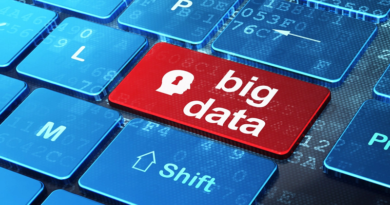How Artificial Intelligence Testing is Top-Notch in Cyber World
Testing artificial intelligence is important in the field of cybersecurity. This is because AI can help overcome some of cybersecurity’s biggest obstacles. There are also many obstacles, including the inability of many organizations to keep up with the myriad of new risks and attacks that emerge as the use of the Internet and technology increases.
AI-powered cybersecurity is expected to change the way we respond to cyberattacks. The ability to examine and learn from vast amounts of data makes artificial intelligence very important in identifying advanced threats. Moreover, AI Test is an all-in-one solution to protect these gadgets from malicious actors. New technologies and gadgets are always available.
This blog will guide you through the challenges the cybersecurity industry is currently facing, the importance of using artificial intelligence testing to overcome these challenges, and some of the downsides of working there. Finally, we will look at some practical applications of AI in this area before concluding.
An Overview of the Cybersecurity Industry
Cybersecurity describes the processes performed by people or organizations to protect their computer hardware and software connected online from cyber-attacks.
The rise of emerging digital technologies such as the Internet of Things (IoT). The increasing frequency and complexity of cyber-attacks and strict data protection laws for data security. The rise in attacks targeting the software supply chain is a key driver of the cybersecurity market.
In addition, the COVID-19 pandemic has increased the rate of malicious attacks on large enterprise databases. They demand stricter database protection and promote the expansion of the cybersecurity industry. In the healthcare, banking, insurance, manufacturing, and financial services sectors, growth in the adoption of organizational security solutions is foreseeable.
Some Intriguing Figures Related to Cybersecurity
The amount of money spent on internal cybersecurity operations is anticipated to increase by 7.2% annually till 2026.
By December 2026, it is familiar that global spending on cybersecurity services and products will increase by 8.4%. The necessity to fix the network, app, and system vulnerabilities because of ongoing corporate and individual cyberattacks are elements that are likely to promote growth.
The cybersecurity industry was estimated to be worth $156.24 billion in 2020 and is anticipated to grow at a CAGR of 14.5 percent from 2021 to 2026, reaching $350.25 billion.
Information security products and services generated $144 billion in revenue in 2018, down 12.4% from 2017, according to Gartner Inc.
Gartner’s predictions are, information security revenue will increase from $124 bn in 2019 to $170.4 bn in 2022. Additionally, according to their analysis, end-user expenditure on cloud security increased by 4.1 percent between 2020 and 2021.
Glaring Cybersecurity Challenges
You might be surprised to learn that human error accounts for 95% of cybersecurity breaches, according to a survey by Google. These errors can include everything from downloading an attachment that contains a virus to using a weak password to access a dangerous website. phishing attacks are among the most common cyber events, CEO scams, computer thefts, and ransomware attacks. The impact of these attacks is staggering, even though they appear controllable. In small and medium-sized businesses (SMBs), data breaches cost an average of $3.9 million. The first four are the first four:
large-scale data monitoring, slower turnaround times, lack of understanding of threats, and organizational compliance standards.
Delving Into Common Cybersecurity Attacks
Cybercrime is constantly evolving, with hackers constantly refining their tactics to do the most damage, further complicating the issues described in the previous section. Malware that can modify its source to avoid detection accounted for 93.67% of malware observed in 2019. Additionally, in the same year, 53% of consumer PCs and 50% of commercial PCs. re-infected trade. To destroy this virus from its source, action and awareness are crucial.
We should all be aware of the following examples of the typical cybersecurity threats that clever hackers have cleverly created.
- Phishing
When a hacker uses the social engineering technique of phishing, they send you an email that contains a dangerous link. By clicking the link, you could give them access to your computer so they can infect it with a bug and steal all your personal data.
- Hardware and Software Attacks
If your system’s hardware and software are not updated to the most recent versions, missing critical security updates can be a risk. It can be introduced to “back doors” or “trojans” and obtain access to the system.
- Network Intrusions
Data going to and from a network endpoint can be hindered by malicious actors and decrypted. If they aren’t caught in time, they might alter it, tamper with it, or use it illegally.
- Cloud Data Breaches
Since more people are using private and public clouds, unencrypted data stored there is an open invitation to malicious hackers. Data saved in the cloud can also be composed due to unreliable interfaces or APIs, insufficient access control, and inadequate security architecture.
- Mobile Malware
Mobile devices’ internal operating systems may become unreliable due to this dangerous malware, which could reduce their functionality. This frequently occurs because URLs are insecure online. In addition, downloaded applications with security flaws also contribute to mobile virus problems.
- Ransomware Attacks
One of the most common types of cyberattacks is ransomware, in which the attackers send a virus into people’s personal laptops and smartphones to access and use the data on those devices. They then want a ransom to give you access to it again.
How Can Artificial Intelligence Testing Enhance Cybersecurity?
A notable benefit of AI testing is that it significantly reduces some labor-intensive jobs known to be time-consuming, such as security monitoring, which is unquestionably a significant time-sink for IT security experts. AI testing can do this repetitious labor instead of humans having to keep an eye on numerous gadgets. To enforce proper cybersecurity, decrease attack surfaces, and detect malicious behavior, AI and machine learning testing need to be in a collar.
Let’s look at some additional crucial areas where AI testing proves to be of the utmost significance:
- Moving a vast amount of information around
Each day, data of over 2.5 quintillion bytes are produced. Artificial intelligence (AI) technologies can assist in automating data processing. It makes sense of vast amounts of data that would be impossible for humans to understand in a usable manner. Security experts cannot evaluate and classify every piece of information because firms face millions of risks. As a result, it is tough for security specialists to foresee dangers before they destroy IT systems. Artificial intelligence testing can identify numerous cyber-security threats and issues without human analysts.
- Behavioral analytics
By analyzing how users typically interact with their devices, ML algorithms are intelligent enough to learn and create a pattern of user behavior.
AI testing flag the user as suspicious and possibly block them if it notices unexpected behaviors that are out of the ordinary. These actions include altering the user’s typing speed or attempting to access the system at odd times.
- Ability to analyze and comprehend data
AI testing analyzes millions of events and detects a wide range of threats. These threats include malware that exploits zero-day vulnerabilities, phishing attempts, and malicious code downloads. As a result, AI and ML have emerged as essential information security technologies. Companies may better understand dangers and respond to them faster thanks to these insights. It also helps them adhere to the best security procedures.
- Detection of spam
Spam detection, as well as other types of social engineering aided by natural language processing (NLP), is a subfield of deep learning.
In general, NLP employs a variety of statistical techniques and extensively learns typical verbal and nonverbal communication patterns to identify and prevent spam content.
- Systems for detecting and preventing intrusions (ID/IP)
These systems can detect harmful network activity, guard against intrusions, and warn users of potential dangers. Systems using ID and IP frequently prove useful in addressing data breaches and improving the security of user information.
Furthermore, it is feasible to guarantee a more effective operation of ID/IP systems by utilizing deep learning, recurrent, and convolutional neural networks. The methods above will make it easier for security teams to distinguish between safe and risky network activity. In addition, it improves traffic analysis accuracy and decreases false alarm frequency.
- Speedy detection of numerous types of threats
When it comes to hacking networks, cybercriminals are becoming more skilled and quicker. The use of cutting-edge technology, such as machine learning, makes it easier to detect cyberattacks. However, it is hard for humans to keep track of every connected system for every possible hazard. These data are used to educate AI-powered devices, which can then learn from real and digital world data.
Wrapping Up: AI Testing Potential in Cybersecurity
Given the rising interest in AI in cybersecurity, it’s realistic to assume that in the future, we’ll see even more sophisticated solutions capable of resolving difficulties in the business that is even more difficult and complex. By automating threat detection, artificial intelligence testing will strive to save cybersecurity and contribute to internet safety.
IT security professionals now utilize AI to reinforce sound cybersecurity procedures. It reduces the attack surface and tracks malicious activity. In addition, it evaluates and deals with massive volumes of data and assesses human behavior.
This is by no means a comprehensive list of its functions. It’s preferable to embrace technology today and keep up with the times if you want to be more prepared for the AI-testing cybersecurity future.




